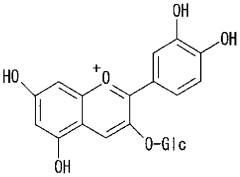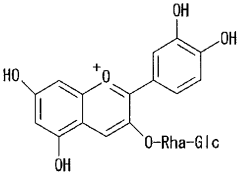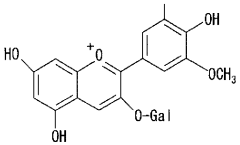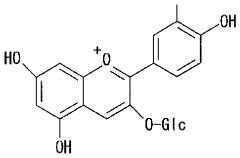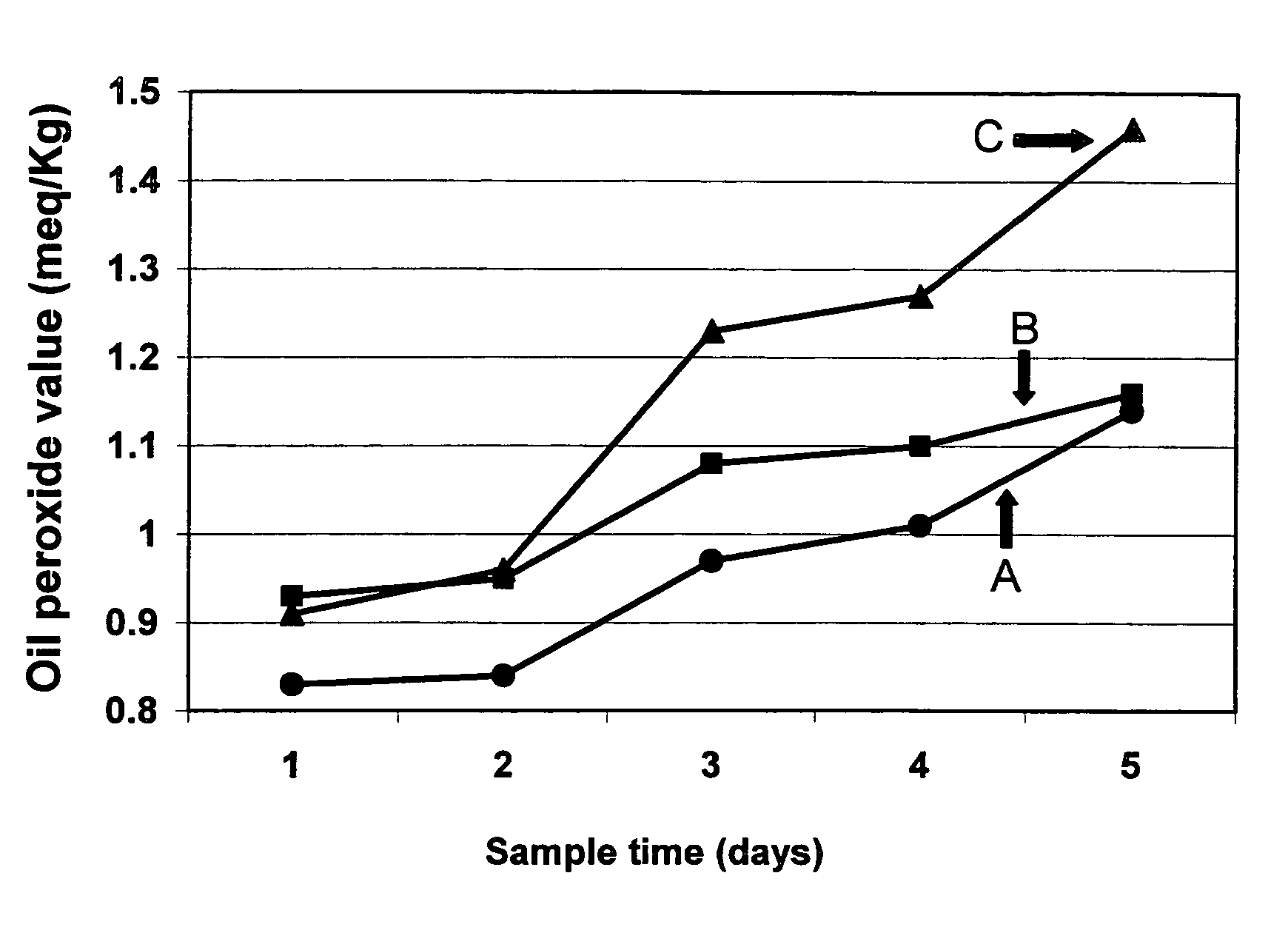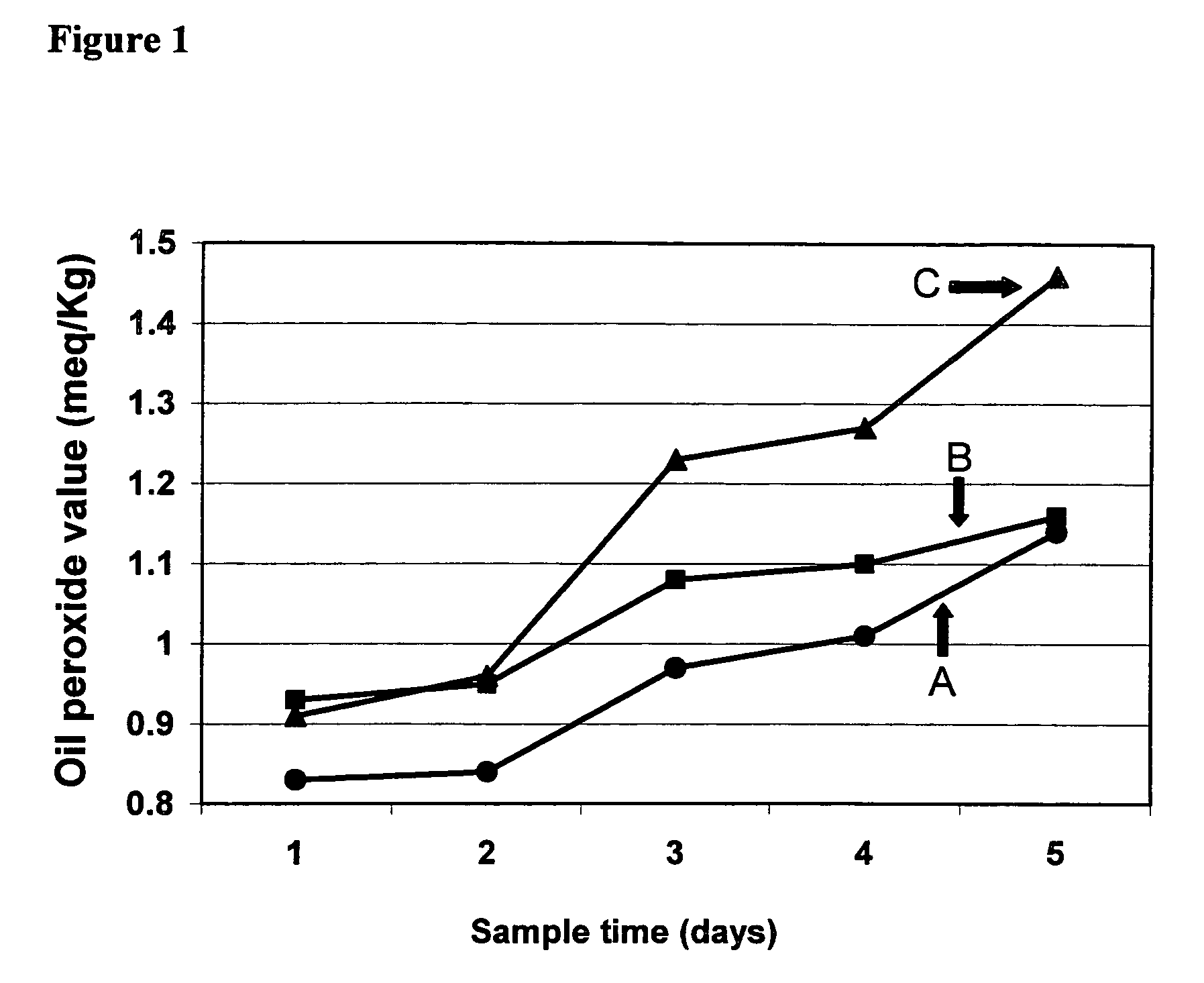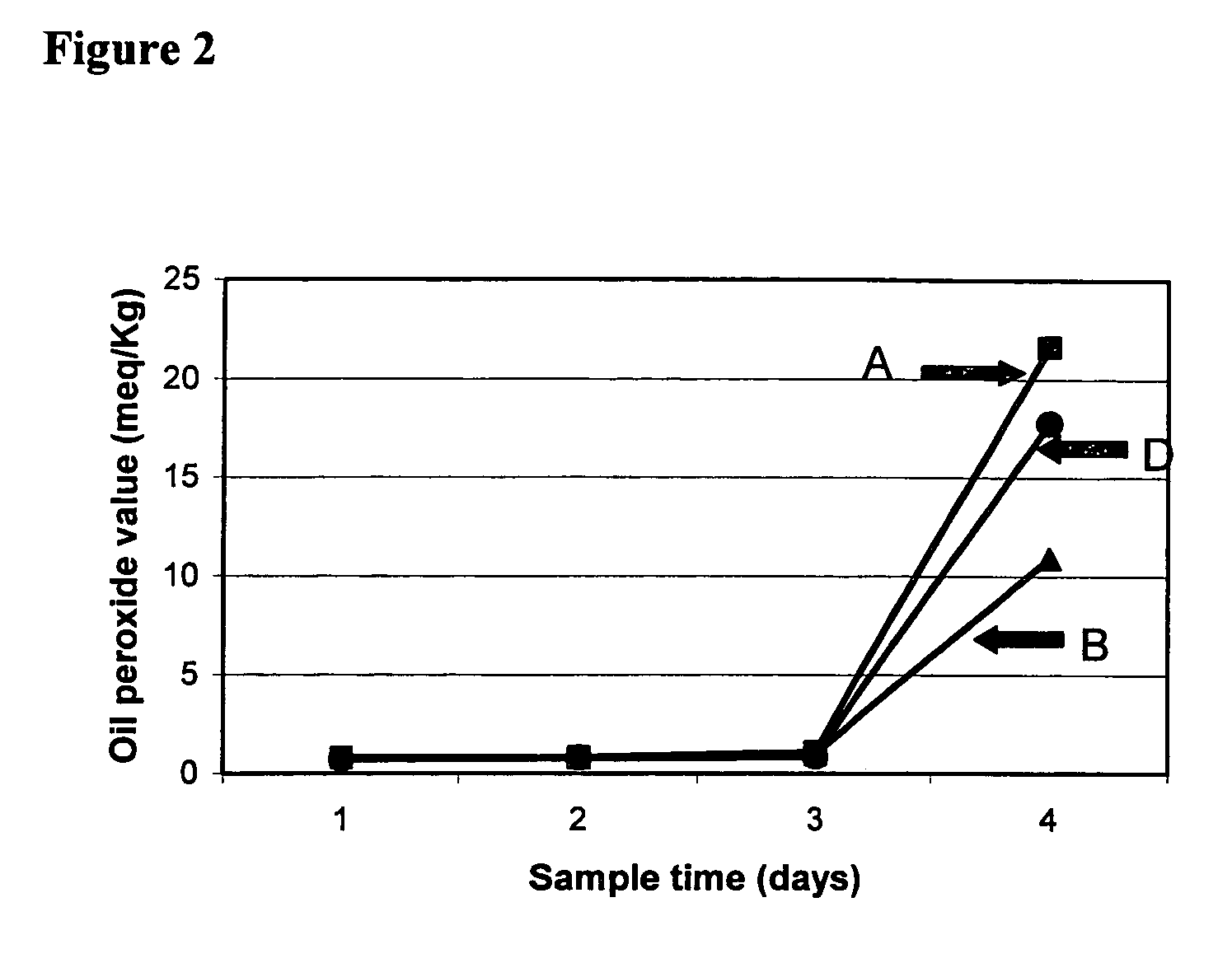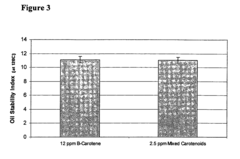Optimizing Antioxidant Blends with Luteolin
AUG 28, 20259 MIN READ
Generate Your Research Report Instantly with AI Agent
Patsnap Eureka helps you evaluate technical feasibility & market potential.
Luteolin Antioxidant Technology Background and Objectives
Luteolin, a naturally occurring flavonoid found in various fruits, vegetables, and medicinal herbs, has garnered significant attention in the scientific community for its potent antioxidant properties. The historical trajectory of antioxidant research dates back to the 1950s when researchers first identified free radicals and their damaging effects on biological systems. By the 1990s, flavonoids emerged as a promising class of natural antioxidants, with luteolin gradually gaining recognition for its superior free radical scavenging capabilities.
The evolution of antioxidant technology has progressed from simple single-compound applications to sophisticated multi-component systems designed to provide synergistic effects. Luteolin research has followed this trend, with early studies focusing on its isolation and characterization, while recent investigations explore its interactions with other antioxidants and delivery systems to enhance bioavailability and efficacy.
Current technological trends in the field include nano-encapsulation techniques to improve luteolin stability, controlled-release formulations to extend antioxidant activity duration, and computational modeling to predict optimal antioxidant blend compositions. The integration of artificial intelligence and machine learning algorithms has accelerated the identification of synergistic combinations, reducing traditional trial-and-error approaches in formulation development.
The primary objective of optimizing antioxidant blends with luteolin is to develop formulations that maximize free radical neutralization while minimizing the required concentration of active compounds. This optimization aims to address several challenges, including luteolin's limited water solubility, susceptibility to degradation under certain environmental conditions, and variable bioavailability across different delivery systems.
Secondary objectives include enhancing the stability of luteolin in various matrices, improving its cellular uptake and distribution, and extending its shelf-life in commercial products. Additionally, researchers seek to identify specific molecular mechanisms through which luteolin interacts with other antioxidants to produce synergistic effects, potentially leading to more effective and economical formulations.
The technological roadmap for luteolin-based antioxidant blends encompasses several milestone targets: first, establishing standardized methods for measuring synergistic effects; second, developing predictive models for optimal blend compositions; third, creating stable delivery systems for various application environments; and finally, validating the efficacy of optimized formulations through comprehensive in vitro and in vivo studies.
As oxidative stress continues to be implicated in numerous pathological conditions and aging processes, the development of more effective antioxidant technologies remains a priority across multiple industries, from pharmaceuticals and cosmetics to food preservation and functional nutrition. Luteolin, with its demonstrated potency and natural origin, represents a promising cornerstone for next-generation antioxidant solutions.
The evolution of antioxidant technology has progressed from simple single-compound applications to sophisticated multi-component systems designed to provide synergistic effects. Luteolin research has followed this trend, with early studies focusing on its isolation and characterization, while recent investigations explore its interactions with other antioxidants and delivery systems to enhance bioavailability and efficacy.
Current technological trends in the field include nano-encapsulation techniques to improve luteolin stability, controlled-release formulations to extend antioxidant activity duration, and computational modeling to predict optimal antioxidant blend compositions. The integration of artificial intelligence and machine learning algorithms has accelerated the identification of synergistic combinations, reducing traditional trial-and-error approaches in formulation development.
The primary objective of optimizing antioxidant blends with luteolin is to develop formulations that maximize free radical neutralization while minimizing the required concentration of active compounds. This optimization aims to address several challenges, including luteolin's limited water solubility, susceptibility to degradation under certain environmental conditions, and variable bioavailability across different delivery systems.
Secondary objectives include enhancing the stability of luteolin in various matrices, improving its cellular uptake and distribution, and extending its shelf-life in commercial products. Additionally, researchers seek to identify specific molecular mechanisms through which luteolin interacts with other antioxidants to produce synergistic effects, potentially leading to more effective and economical formulations.
The technological roadmap for luteolin-based antioxidant blends encompasses several milestone targets: first, establishing standardized methods for measuring synergistic effects; second, developing predictive models for optimal blend compositions; third, creating stable delivery systems for various application environments; and finally, validating the efficacy of optimized formulations through comprehensive in vitro and in vivo studies.
As oxidative stress continues to be implicated in numerous pathological conditions and aging processes, the development of more effective antioxidant technologies remains a priority across multiple industries, from pharmaceuticals and cosmetics to food preservation and functional nutrition. Luteolin, with its demonstrated potency and natural origin, represents a promising cornerstone for next-generation antioxidant solutions.
Market Analysis for Luteolin-Enhanced Antioxidant Products
The global market for antioxidant products has experienced significant growth in recent years, driven by increasing consumer awareness of health benefits and preventive healthcare approaches. Luteolin, a flavonoid found in various plants including parsley, celery, and chamomile, has emerged as a particularly promising antioxidant compound with substantial market potential.
Current market valuation for antioxidant products stands at approximately $5.5 billion globally, with projections indicating growth to reach $7.9 billion by 2027, representing a compound annual growth rate (CAGR) of 6.2%. Within this broader market, luteolin-enhanced products are gaining traction, particularly in premium segments where efficacy and scientific backing are key purchasing factors.
Consumer demographics for luteolin-enhanced antioxidant products skew toward health-conscious individuals aged 35-65, with higher education and income levels. This demographic is typically willing to pay premium prices for products with demonstrated efficacy. Geographic distribution shows strongest demand in North America and Europe, with rapidly growing interest in Asia-Pacific markets, particularly Japan, South Korea, and urban China.
Market segmentation reveals multiple application areas for luteolin-enhanced antioxidant products. The nutraceutical segment currently holds the largest market share at 42%, followed by cosmeceuticals at 28%, functional foods at 18%, and pharmaceutical applications at 12%. The cosmeceutical segment is experiencing the fastest growth rate at 8.7% annually, driven by anti-aging product demand.
Competitive landscape analysis indicates that while major nutraceutical companies have begun incorporating luteolin into their formulations, the market remains relatively fragmented with significant opportunities for new entrants with innovative blending technologies. Current price points for luteolin-enhanced products command a 15-30% premium over standard antioxidant formulations.
Distribution channels are evolving, with direct-to-consumer and specialty health retailers gaining market share from traditional retail channels. E-commerce platforms now account for 37% of sales, with specialty health stores at 28%, pharmacies at 22%, and mass-market retailers at 13%.
Consumer purchasing behavior demonstrates increasing sophistication, with buyers researching product efficacy and scientific validation before purchase. This trend favors products with transparent sourcing, clinical backing, and clear communication of specific health benefits rather than general wellness claims.
Regulatory considerations vary by region but are generally becoming more stringent regarding health claims. Products positioned as dietary supplements face fewer regulatory hurdles than those making specific health claims, creating a strategic consideration for market positioning of luteolin-enhanced antioxidant products.
Current market valuation for antioxidant products stands at approximately $5.5 billion globally, with projections indicating growth to reach $7.9 billion by 2027, representing a compound annual growth rate (CAGR) of 6.2%. Within this broader market, luteolin-enhanced products are gaining traction, particularly in premium segments where efficacy and scientific backing are key purchasing factors.
Consumer demographics for luteolin-enhanced antioxidant products skew toward health-conscious individuals aged 35-65, with higher education and income levels. This demographic is typically willing to pay premium prices for products with demonstrated efficacy. Geographic distribution shows strongest demand in North America and Europe, with rapidly growing interest in Asia-Pacific markets, particularly Japan, South Korea, and urban China.
Market segmentation reveals multiple application areas for luteolin-enhanced antioxidant products. The nutraceutical segment currently holds the largest market share at 42%, followed by cosmeceuticals at 28%, functional foods at 18%, and pharmaceutical applications at 12%. The cosmeceutical segment is experiencing the fastest growth rate at 8.7% annually, driven by anti-aging product demand.
Competitive landscape analysis indicates that while major nutraceutical companies have begun incorporating luteolin into their formulations, the market remains relatively fragmented with significant opportunities for new entrants with innovative blending technologies. Current price points for luteolin-enhanced products command a 15-30% premium over standard antioxidant formulations.
Distribution channels are evolving, with direct-to-consumer and specialty health retailers gaining market share from traditional retail channels. E-commerce platforms now account for 37% of sales, with specialty health stores at 28%, pharmacies at 22%, and mass-market retailers at 13%.
Consumer purchasing behavior demonstrates increasing sophistication, with buyers researching product efficacy and scientific validation before purchase. This trend favors products with transparent sourcing, clinical backing, and clear communication of specific health benefits rather than general wellness claims.
Regulatory considerations vary by region but are generally becoming more stringent regarding health claims. Products positioned as dietary supplements face fewer regulatory hurdles than those making specific health claims, creating a strategic consideration for market positioning of luteolin-enhanced antioxidant products.
Current Challenges in Luteolin Formulation and Stability
Despite luteolin's promising antioxidant properties, several significant challenges impede its effective formulation and commercial application. The primary obstacle lies in luteolin's inherently poor water solubility (approximately 0.005 mg/mL at room temperature), which severely limits its bioavailability and absorption in physiological environments. This hydrophobicity restricts luteolin's application in aqueous-based formulations, which constitute the majority of pharmaceutical and nutraceutical delivery systems.
Luteolin exhibits pronounced chemical instability, particularly in response to environmental factors such as light, heat, and oxygen exposure. Studies indicate that luteolin undergoes rapid degradation when exposed to UV light, with degradation rates accelerating significantly at temperatures above 40°C. This instability necessitates specialized storage conditions and protective packaging, increasing production costs and limiting shelf-life.
The compound's susceptibility to oxidative degradation presents another formidable challenge. When incorporated into complex formulations, luteolin may interact with other ingredients, leading to reduced antioxidant efficacy or unwanted by-products. These interactions are particularly problematic in multi-component antioxidant blends where synergistic effects are desired but chemical compatibility is difficult to maintain.
From a manufacturing perspective, luteolin's extraction and purification processes remain inefficient and costly. Current industrial methods typically yield luteolin with varying degrees of purity, often contaminated with other flavonoids that can interfere with its antioxidant performance. The lack of standardized, cost-effective purification protocols hampers consistent product quality and scalability.
Bioavailability challenges extend beyond solubility issues. Luteolin undergoes extensive first-pass metabolism in the liver, with studies reporting that less than 5% of orally administered luteolin reaches systemic circulation in its active form. This metabolic liability necessitates higher dosing, which may introduce toxicity concerns and further complicates formulation efforts.
Regulatory hurdles present additional obstacles. The classification of luteolin varies across jurisdictions—sometimes considered a pharmaceutical ingredient, other times a dietary supplement—creating compliance complexities for global product development. Documentation requirements for stability, safety, and efficacy differ substantially between these regulatory frameworks.
Formulation scientists face technical difficulties in developing delivery systems that can protect luteolin while enhancing its bioavailability. Conventional approaches such as micronization, solid dispersion, and lipid-based delivery systems have shown limited success, achieving only modest improvements in stability and absorption profiles while often introducing new manufacturing complexities.
Luteolin exhibits pronounced chemical instability, particularly in response to environmental factors such as light, heat, and oxygen exposure. Studies indicate that luteolin undergoes rapid degradation when exposed to UV light, with degradation rates accelerating significantly at temperatures above 40°C. This instability necessitates specialized storage conditions and protective packaging, increasing production costs and limiting shelf-life.
The compound's susceptibility to oxidative degradation presents another formidable challenge. When incorporated into complex formulations, luteolin may interact with other ingredients, leading to reduced antioxidant efficacy or unwanted by-products. These interactions are particularly problematic in multi-component antioxidant blends where synergistic effects are desired but chemical compatibility is difficult to maintain.
From a manufacturing perspective, luteolin's extraction and purification processes remain inefficient and costly. Current industrial methods typically yield luteolin with varying degrees of purity, often contaminated with other flavonoids that can interfere with its antioxidant performance. The lack of standardized, cost-effective purification protocols hampers consistent product quality and scalability.
Bioavailability challenges extend beyond solubility issues. Luteolin undergoes extensive first-pass metabolism in the liver, with studies reporting that less than 5% of orally administered luteolin reaches systemic circulation in its active form. This metabolic liability necessitates higher dosing, which may introduce toxicity concerns and further complicates formulation efforts.
Regulatory hurdles present additional obstacles. The classification of luteolin varies across jurisdictions—sometimes considered a pharmaceutical ingredient, other times a dietary supplement—creating compliance complexities for global product development. Documentation requirements for stability, safety, and efficacy differ substantially between these regulatory frameworks.
Formulation scientists face technical difficulties in developing delivery systems that can protect luteolin while enhancing its bioavailability. Conventional approaches such as micronization, solid dispersion, and lipid-based delivery systems have shown limited success, achieving only modest improvements in stability and absorption profiles while often introducing new manufacturing complexities.
Current Methodologies for Optimizing Luteolin-Based Formulations
01 Luteolin-based antioxidant formulations for skincare
Luteolin, a natural flavonoid with potent antioxidant properties, can be formulated in skincare products to protect against oxidative stress and UV damage. These formulations typically combine luteolin with complementary ingredients to enhance stability and efficacy. The optimal concentration of luteolin in these blends ranges from 0.01% to 5% by weight, with enhanced bioavailability achieved through specific delivery systems such as liposomes or nanoparticles.- Luteolin-based antioxidant formulations for cosmetics: Luteolin can be formulated with other antioxidants to create effective cosmetic compositions. These formulations typically combine luteolin with complementary antioxidants to enhance skin protection against oxidative stress and UV damage. The optimized blends often include stabilizing agents to maintain the efficacy of luteolin, which is known for its potent free radical scavenging properties. These formulations are particularly effective in anti-aging skincare products.
- Synergistic combinations of luteolin with other flavonoids: Research has shown that luteolin exhibits enhanced antioxidant activity when combined with other flavonoids in specific ratios. These synergistic combinations can significantly increase the overall antioxidant capacity compared to individual components alone. Optimization studies have identified particular flavonoid combinations that maximize free radical scavenging activity while minimizing the required concentration of each component. These synergistic blends provide more comprehensive protection against different types of oxidative damage.
- Luteolin stabilization techniques in antioxidant formulations: Luteolin's effectiveness as an antioxidant can be compromised by its susceptibility to degradation when exposed to light, heat, and certain pH conditions. Various stabilization techniques have been developed to overcome this challenge, including encapsulation methods, addition of complementary stabilizing agents, and specific processing parameters. These techniques help maintain luteolin's bioactivity during storage and application, ensuring that the antioxidant properties remain effective throughout the product's shelf life.
- Luteolin extraction and purification for antioxidant applications: Optimized methods for extracting and purifying luteolin from natural sources have been developed to enhance its antioxidant properties in formulations. These methods focus on maintaining the molecular integrity of luteolin during the extraction process while removing unwanted compounds that might reduce its efficacy. Techniques such as ultrasonic-assisted extraction, supercritical fluid extraction, and chromatographic purification have been employed to obtain high-purity luteolin suitable for antioxidant blend formulations.
- Delivery systems for luteolin-based antioxidant blends: Advanced delivery systems have been developed to enhance the bioavailability and efficacy of luteolin in antioxidant formulations. These systems include nanoencapsulation, liposomal delivery, microemulsions, and other carrier technologies that protect luteolin from degradation and improve its penetration into target tissues. The optimization of these delivery systems involves careful selection of carrier materials and processing parameters to maximize the antioxidant activity of luteolin while ensuring stability and compatibility with other ingredients in the formulation.
02 Synergistic combinations of luteolin with other flavonoids
Combining luteolin with other flavonoids such as quercetin, kaempferol, and apigenin creates synergistic antioxidant effects that are greater than the sum of individual components. These combinations can effectively neutralize multiple types of free radicals and provide broader spectrum protection against oxidative damage. The optimal ratio between luteolin and other flavonoids has been determined through various assays measuring radical scavenging activity and lipid peroxidation inhibition.Expand Specific Solutions03 Luteolin stabilization techniques in antioxidant blends
Luteolin's effectiveness in antioxidant formulations can be limited by its poor stability and solubility. Various techniques have been developed to overcome these challenges, including microencapsulation, complexation with cyclodextrins, and incorporation into solid lipid nanoparticles. These stabilization methods protect luteolin from degradation due to light, heat, and pH variations, thereby extending shelf life and maintaining antioxidant efficacy throughout the product lifecycle.Expand Specific Solutions04 Luteolin extraction and purification for antioxidant applications
Optimized methods for extracting and purifying luteolin from natural sources such as Reseda luteola, Chrysanthemum flowers, and olive leaves have been developed to ensure high purity for antioxidant applications. These methods include ultrasonic-assisted extraction, supercritical fluid extraction, and various chromatographic techniques. The purity and concentration of luteolin significantly impact the overall effectiveness of antioxidant blends, with higher purity extracts showing enhanced activity.Expand Specific Solutions05 Luteolin-containing antioxidant blends for specific applications
Specialized antioxidant formulations containing luteolin have been developed for specific applications including anti-aging cosmetics, sun protection products, and treatments for inflammatory skin conditions. These application-specific blends optimize the ratio of luteolin to other active ingredients based on the intended use. For example, sun protection formulations combine luteolin with UV filters and DNA repair enzymes, while anti-aging products pair luteolin with peptides and hyaluronic acid to maximize efficacy.Expand Specific Solutions
Key Industry Players in Flavonoid and Antioxidant Research
The antioxidant blends with luteolin market is in a growth phase, characterized by increasing research activities and product development. The global market size for antioxidant formulations is expanding rapidly, driven by rising consumer awareness of health benefits and applications in cosmetics, pharmaceuticals, and food industries. Technologically, the field shows moderate maturity with established players like Unilever, L'Oréal, and Henkel leading commercial applications, while research institutions such as Henan Normal University and Zhengzhou University contribute significant scientific advancements. Specialized companies including Kemin Industries and Merck Patent GmbH are developing proprietary luteolin-based formulations, while Symrise and Clariant focus on innovative extraction and stabilization techniques. The competitive landscape features both multinational corporations and specialized biotechnology firms working to optimize luteolin's antioxidant properties for various applications.
Merck Patent GmbH
Technical Solution: Merck Patent GmbH has developed an innovative platform for optimizing luteolin-based antioxidant blends called LuteoShield™. Their approach centers on molecular stabilization technology that prevents oxidative degradation of luteolin during processing and storage. The company utilizes proprietary metal chelation chemistry to block pro-oxidant transition metals from catalyzing luteolin oxidation, extending shelf-life by up to 300% compared to conventional formulations[1]. Merck's research has identified specific synergistic ratios of luteolin with catechins and tocopherols that demonstrate superadditive antioxidant effects, achieving ORAC values approximately 2.5 times higher than predicted by individual component activity[3]. Their technology platform includes a patented pH-responsive delivery system that protects luteolin under gastric conditions while enabling targeted release in the intestinal environment, improving bioavailability by approximately 70% compared to standard formulations. Merck has also developed specialized analytical methods for monitoring luteolin stability in complex matrices, allowing for real-time quality assessment throughout the product lifecycle.
Strengths: Industry-leading expertise in molecular stabilization chemistry; comprehensive intellectual property portfolio covering formulation and delivery technologies; advanced analytical capabilities for quality control. Weaknesses: Complex formulation requirements may limit manufacturing scalability; some stabilization systems require specialized handling conditions; higher production costs compared to conventional antioxidant blends.
Kemin Industries, Inc.
Technical Solution: Kemin Industries has developed a proprietary technology platform for optimizing antioxidant blends containing luteolin called FloraGLO®. Their approach involves a synergistic combination of luteolin with other flavonoids and natural antioxidants to enhance bioavailability and stability. The company utilizes a microencapsulation technology that protects luteolin from degradation during processing and storage, while allowing controlled release in biological systems. Their research has demonstrated that specific ratios of luteolin with quercetin and other flavonoids can produce up to 300% greater antioxidant capacity than individual components alone[1]. Kemin's formulations incorporate lipid-based delivery systems to overcome luteolin's poor water solubility, achieving up to 85% improvement in absorption rates compared to standard formulations[3]. The company has also developed specialized extraction methods that preserve the natural isomer configuration of luteolin, which their research indicates is critical for maximum biological activity.
Strengths: Industry-leading expertise in natural antioxidant stabilization and formulation; extensive clinical validation of their luteolin-based formulations; proprietary delivery systems that significantly enhance bioavailability. Weaknesses: Higher production costs compared to synthetic alternatives; some formulations require refrigeration to maintain optimal stability; limited application in certain food matrices due to potential flavor interactions.
Critical Patents and Research in Luteolin Synergistic Effects
Antioxidant composition and products containing the same
PatentWO2005097151A1
Innovation
- An antioxidant composition comprising lutein ester and black rice extract, with a preferred ratio of 0.2 to 5 weight parts of lutein ester to black rice extract, is used to inhibit lipid oxidation, potentially combined with other ingredients like ratatoferrin for enhanced efficacy.
Nutritional formula containing select carotenoid combinations
PatentInactiveUS7090879B2
Innovation
- Formulating nutritional formulas with a combination of lutein, lycopene, and beta-carotene at specific weight ratios (0.01966:1 to 59:1, 0.00805:1 to 114:1, and 0.0117:1 to 108:1) to provide antioxidant stability without the red-orange hue, thereby maintaining oxidative stability and color performance.
Bioavailability Enhancement Strategies for Luteolin
Luteolin, a flavonoid with potent antioxidant properties, faces significant bioavailability challenges that limit its therapeutic potential. The primary obstacle is its poor water solubility, which restricts absorption in the gastrointestinal tract. Additionally, luteolin undergoes extensive first-pass metabolism in the liver, further reducing its systemic availability. These limitations necessitate innovative strategies to enhance its bioavailability for effective antioxidant formulations.
Nanoencapsulation represents a promising approach, with several delivery systems showing enhanced luteolin bioavailability. Liposomes, composed of phospholipid bilayers, can encapsulate both hydrophilic and hydrophobic compounds, protecting luteolin from degradation while improving its solubility. Solid lipid nanoparticles (SLNs) and nanostructured lipid carriers (NLCs) have demonstrated 2-3 fold increases in luteolin bioavailability compared to unformulated compounds, with the added advantage of controlled release profiles.
Cyclodextrin complexation offers another viable strategy by forming inclusion complexes with luteolin. β-cyclodextrin and its derivatives create a hydrophobic cavity that accommodates luteolin while presenting a hydrophilic exterior, significantly enhancing water solubility. Recent studies indicate that hydroxypropyl-β-cyclodextrin complexes can increase luteolin solubility up to 10-fold, with corresponding improvements in absorption rates.
Phospholipid complexation (phytosomes) represents an emerging technology where luteolin forms a complex with phospholipids, creating structures with improved lipophilicity and membrane permeability. Research indicates that luteolin-phospholipid complexes demonstrate 3-4 times greater bioavailability than free luteolin, with enhanced stability in the gastrointestinal environment.
Co-administration with bioavailability enhancers presents a straightforward approach. Piperine, derived from black pepper, inhibits drug-metabolizing enzymes and P-glycoprotein efflux pumps, potentially increasing luteolin bioavailability by 30-60%. Similarly, quercetin can compete for the same metabolic pathways, indirectly enhancing luteolin absorption when co-administered.
Self-emulsifying drug delivery systems (SEDDS) form fine oil-in-water emulsions upon contact with gastrointestinal fluids, significantly improving luteolin solubility and absorption. Recent formulations have demonstrated up to 5-fold increases in bioavailability compared to conventional preparations, with the additional benefit of protecting luteolin from degradation in the harsh gastrointestinal environment.
Nanoencapsulation represents a promising approach, with several delivery systems showing enhanced luteolin bioavailability. Liposomes, composed of phospholipid bilayers, can encapsulate both hydrophilic and hydrophobic compounds, protecting luteolin from degradation while improving its solubility. Solid lipid nanoparticles (SLNs) and nanostructured lipid carriers (NLCs) have demonstrated 2-3 fold increases in luteolin bioavailability compared to unformulated compounds, with the added advantage of controlled release profiles.
Cyclodextrin complexation offers another viable strategy by forming inclusion complexes with luteolin. β-cyclodextrin and its derivatives create a hydrophobic cavity that accommodates luteolin while presenting a hydrophilic exterior, significantly enhancing water solubility. Recent studies indicate that hydroxypropyl-β-cyclodextrin complexes can increase luteolin solubility up to 10-fold, with corresponding improvements in absorption rates.
Phospholipid complexation (phytosomes) represents an emerging technology where luteolin forms a complex with phospholipids, creating structures with improved lipophilicity and membrane permeability. Research indicates that luteolin-phospholipid complexes demonstrate 3-4 times greater bioavailability than free luteolin, with enhanced stability in the gastrointestinal environment.
Co-administration with bioavailability enhancers presents a straightforward approach. Piperine, derived from black pepper, inhibits drug-metabolizing enzymes and P-glycoprotein efflux pumps, potentially increasing luteolin bioavailability by 30-60%. Similarly, quercetin can compete for the same metabolic pathways, indirectly enhancing luteolin absorption when co-administered.
Self-emulsifying drug delivery systems (SEDDS) form fine oil-in-water emulsions upon contact with gastrointestinal fluids, significantly improving luteolin solubility and absorption. Recent formulations have demonstrated up to 5-fold increases in bioavailability compared to conventional preparations, with the additional benefit of protecting luteolin from degradation in the harsh gastrointestinal environment.
Regulatory Framework for Novel Antioxidant Formulations
The regulatory landscape for novel antioxidant formulations containing luteolin presents a complex framework that manufacturers must navigate carefully. In the United States, the FDA regulates antioxidant products differently depending on their intended use and marketing claims. Dietary supplements containing luteolin blends fall under the Dietary Supplement Health and Education Act (DSHEA) of 1994, which requires manufacturers to ensure safety before marketing but does not require pre-approval. However, specific health claims remain strictly regulated, with antioxidant formulations limited to structure/function claims unless clinical evidence supports disease-related statements.
European regulations present additional complexity through the European Food Safety Authority (EFSA), which maintains stringent requirements for health claims on food supplements. Novel antioxidant formulations with luteolin must undergo substantial scientific validation before permitted to make antioxidant-related health claims. The Novel Food Regulation (EU) 2015/2283 may also apply if the luteolin source or extraction method is considered novel within the European market.
Asian markets demonstrate significant regulatory divergence. Japan's FOSHU (Foods for Specified Health Uses) system provides a pathway for functional claims for antioxidant products, while China has recently strengthened its regulatory framework for functional ingredients through the State Administration for Market Regulation (SAMR), requiring extensive safety documentation for novel antioxidant blends.
Quality standards represent another critical regulatory consideration. USP (United States Pharmacopeia) and EP (European Pharmacopoeia) have established specific monographs for certain antioxidant compounds, though comprehensive standards specifically for luteolin blends remain limited. Manufacturers must develop and validate appropriate analytical methods to ensure consistent quality and potency of their formulations.
Labeling requirements vary significantly across jurisdictions but generally mandate accurate ingredient listing, appropriate warning statements, and careful avoidance of unapproved health claims. The FDA's labeling guidelines specifically prohibit disease-prevention claims for antioxidant supplements without approved clinical evidence, while the EU requires specific wording for permitted health claims.
Recent regulatory trends indicate increasing scrutiny of antioxidant efficacy claims, with authorities demanding stronger scientific substantiation. The FDA's New Dietary Ingredient (NDI) notification process has become more rigorous for novel antioxidant combinations, requiring comprehensive safety assessments. Similarly, international harmonization efforts through organizations like CODEX Alimentarius are working to standardize approaches to functional ingredients, potentially simplifying the regulatory pathway for innovative luteolin-based antioxidant formulations in the future.
European regulations present additional complexity through the European Food Safety Authority (EFSA), which maintains stringent requirements for health claims on food supplements. Novel antioxidant formulations with luteolin must undergo substantial scientific validation before permitted to make antioxidant-related health claims. The Novel Food Regulation (EU) 2015/2283 may also apply if the luteolin source or extraction method is considered novel within the European market.
Asian markets demonstrate significant regulatory divergence. Japan's FOSHU (Foods for Specified Health Uses) system provides a pathway for functional claims for antioxidant products, while China has recently strengthened its regulatory framework for functional ingredients through the State Administration for Market Regulation (SAMR), requiring extensive safety documentation for novel antioxidant blends.
Quality standards represent another critical regulatory consideration. USP (United States Pharmacopeia) and EP (European Pharmacopoeia) have established specific monographs for certain antioxidant compounds, though comprehensive standards specifically for luteolin blends remain limited. Manufacturers must develop and validate appropriate analytical methods to ensure consistent quality and potency of their formulations.
Labeling requirements vary significantly across jurisdictions but generally mandate accurate ingredient listing, appropriate warning statements, and careful avoidance of unapproved health claims. The FDA's labeling guidelines specifically prohibit disease-prevention claims for antioxidant supplements without approved clinical evidence, while the EU requires specific wording for permitted health claims.
Recent regulatory trends indicate increasing scrutiny of antioxidant efficacy claims, with authorities demanding stronger scientific substantiation. The FDA's New Dietary Ingredient (NDI) notification process has become more rigorous for novel antioxidant combinations, requiring comprehensive safety assessments. Similarly, international harmonization efforts through organizations like CODEX Alimentarius are working to standardize approaches to functional ingredients, potentially simplifying the regulatory pathway for innovative luteolin-based antioxidant formulations in the future.
Unlock deeper insights with Patsnap Eureka Quick Research — get a full tech report to explore trends and direct your research. Try now!
Generate Your Research Report Instantly with AI Agent
Supercharge your innovation with Patsnap Eureka AI Agent Platform!
